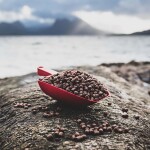The full consequences of the Russian trade embargo on food imports from the EU, the United States, Canada, Australia and Norway are only just starting to be felt by those directly affected. But with the Kremlin keen to see a drastic reduction in the country’s dependency on seafood imports, exporters shouldn’t expect business to simply return to normal when the ban ends in August 2015.
Thanks to a vast territory that incorporates waters from the Barents Sea to the Sea of Japan, the Russian fleet mainly catches large volumes of whitefish and pelagic species. In 2013, it ranked fifth in the world in terms of its catch size, landing a total of 4.3 million metric tons (MT) of seafood, while the country’s three main processing hubs achieved a combined output of 3.8 million MT of products.
But while Russia’s wild catch sector is strong, its aquaculture industry lags well behind, confirmed Alexey Pchelintsev, sales manager CJSC Strelets.
Speaking at the Humber Seafood Summit 2014, held in Grimsby, United Kingdom, last week, Pchelintsev said Russia is currently ranked just 38th on the list of the world’s biggest aquaculture countries, producing a modest 140,000 MT of farmed products last year.
“Because the oceans are limited and cannot produce much more in terms of additional wild catch, there is much more optimism about the opportunity to grow our aquaculture. Russian fishery officials are targeting reaching 500,000 MT per year in the coming years,” he said.
To support this focus on fish farming, Russia's Federal Fisheries Agency (Rosrybolovstvo) has implemented a State Aquaculture Plan. The strategy forecasts production will increase to 200,000 MT by 2017 and to 410,000 MT by 2020.
“Aquaculture is seen by the state as one of the main directions to achieve greater seafood independence. The government plans to subsidize the expansion and construction of projects, as well as [establishing] the processing infrastructure needed to develop this sector of the economy. It will also promote and finance integrated coastal and inland processing hubs and fishery clusters in the most dynamic and active areas of the country,” said Pchelintsev.
At the same time, Russian officials expect to see a surge in the country’s consumption of seafood. In total, the Russian population — some 143 million people — consumed 2.1 million MT of seafood in 2013, including an estimated 1 million MT of imported products. This equated to a per capita consumption of 22kg, and the government forecasts this will soar to 28kg per capita by 2020, underpinned by increased domestic production.
Ultimately, the state believes an 80:20 split between domestic and imported products is achievable. Although it accepts that to maximize the value of its own products, Russia must conduct significantly more value-adding, said Pchelintsev.
In the first-half of this year, prior to the trade embargo, Russia imported 587,848 MT of seafood, valued at USD 1.3 billion (EUR 1.1 billion). During the same period, it exported 1.2 million MT of products with a value of USD 1.9 billion (EUR 1.5 billion).






